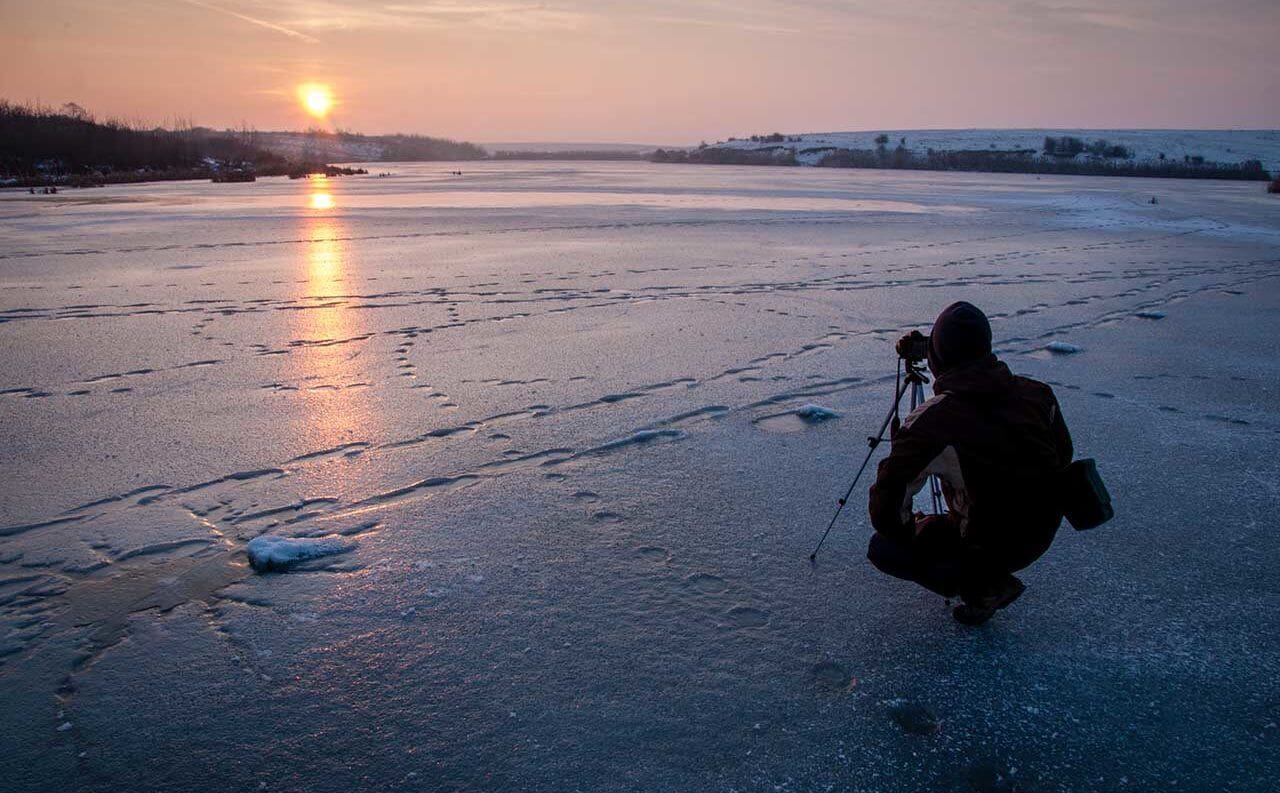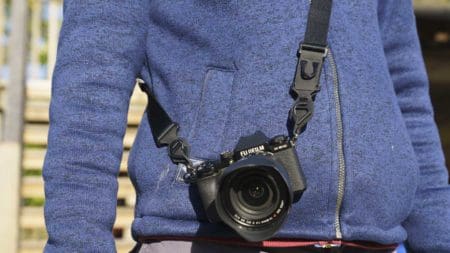Landscapes are an enduringly popular subject for photographers. But to capture scenic vistas all year round requires a camera with a unique combination of features and capabilities. The best cameras for landscape photography will offer a large sensor capable of capturing big resolution and dynamic range. In-body image stabilization is also fast becoming a must-have feature for landscape photographers.
Body-wise, weather-sealing and a portable design are must-have features in the best cameras for landscape photography. Photographers work in all weather and typically carry a lot of gear on their shoots, so any size reduction in the camera body is most welcome.
Other qualities landscape photographers might consider are battery life, a flip screen for shooting at low angles and the number of AF points the camera offers.
Which camera is popular with landscape photographers?
Most landscape photographers tend to shoot with Canon, Nikon or Sony models. The Nikon D850 and Canon EOS 5D Mark IV are often regarded as the best DSLRs for landscape photography. But with the market moving mirrorless, you might consider Canon EOS R5, Sony A7R IV or one of the Nikon Z7 cameras, all of which we describe in more detail below.
Which budget camera is best for landscape photography?
You will find the best budget camera for landscape photography in our guide to the best affordable camera for landscape photography. We’re discussing higher end options in this guide you’re reading now, but in our list of the best affordable options we suggest cameras like the Fujifilm X-A7, Canon EOS 850D and Olympus OM-D E-M10 Mark IV.
The best cameras for landscape photography you can buy today
Below we’ve rounded up our picks for the best cameras for landscape photography based on our own tests. For a deeper dive into the many different camera types and features available, check out our range of camera buying guides.
Canon EOS R5
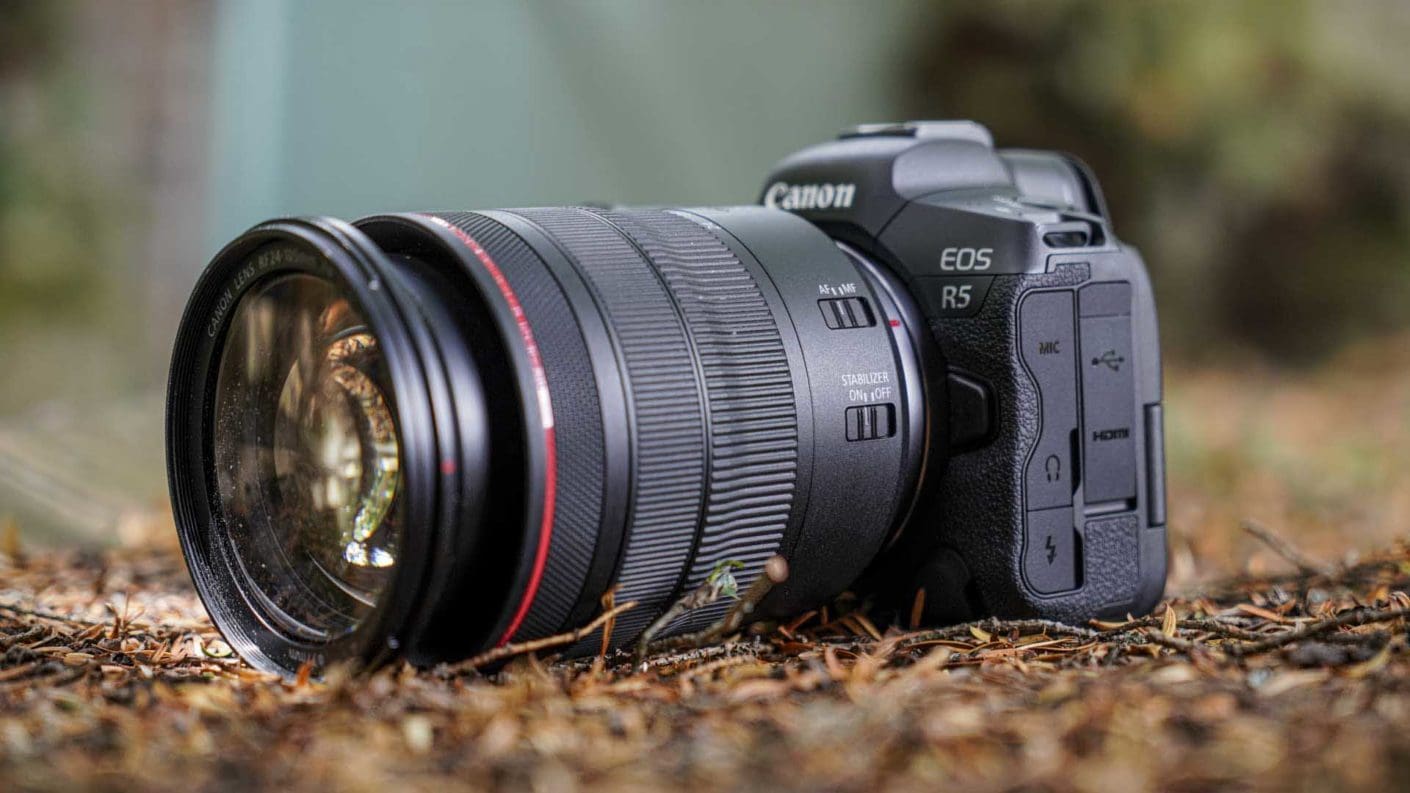
Specification
- Camera Type: Mirrorless
- Announced: 9th July 2020
- Sensor: 45Mp Full-frame Dual Pixel CMOS AF II
- Processor: Digic X
- Lens mount: RF
- Sensitivity range: Stills: ISO 100-51,200 expandable to ISO 50-102,400, Movies: ISO 100-25600, expandable to ISO ISO 51,200
- Metering: 384-zone metering with Evaluative metering (linked to All AF points), Partial metering (approx. 6.1% of viewfinder at centre), Spot metering: Centre spot metering (approx. 3.1% viewfinder at centre), Centre weighted average metering
- Shutter speed range: 1/8000sec-30 seconds and Bulb
- File formats: Raw + Jpeg/HEIF, MP4
- Maximum continuous shooting rate: Mechanical shutter: 12fps, Electronic shutter: 20fps
- Maximum video resolution: Uncropped, internal raw recording 8K video at up to 29.97fps in 4:2:2 10-bit in Canon Log (H.265) or 4:2:2 10-bit HDR PQ (H.265), Uncropped internal recording 4K video at up to 119.88fps in 4:2:2 10-bit in Canon Log (H.265) or 4:2:2 10-bit HDR PQ (H.265) 4:2:2 10-bit in Canon Log or 4:2:2 10-bit HDR PQ, 4K output over HDMI at up to 59.94fps
- Autofocus system: Dual Pixel CMOS AF II phase detection with 5940 points in stills and 4500 points in movie mode
- Viewfinder: 0.5-inch 5.76million-dot OLED electronic viewfinder with 120fps display and 0.76x magnification
- Screen: 3.15-inch 2.1-million dot vari-angle touchscreen
- Autofocus: Dual Pixel CMOS AF II with Advanced Animal AF (recognising dogs, cats and birds) supported in all video modes with 100% coverage and up to 1053 'AF segments'
- Stabilisation: In-body image stabilisation (IBIS) that works with lens IS and enables up to 8-stops of shutter speed compensation
- Storage: Dual slots, 1x CFexpress, 1x SDXC UHS-II
- Dimensions: 135.8 x 97.5 x 88mm
- Weight: 650 g / 738 g with card and battery
Inside the Canon EOS R5 is a new full-frame sensor with 45million effective pixels. Canon has introduced a new version of its Dual Pixel CMOS AF sensor design, called Dual Pixel CMOS AF II and this helps deliver some impressive autofocus functionality in the EOS R5.
For example, 100% of the vertical and horizontal space of the sensor is covered by the autofocus (AF) system and there are 5,940 selectable AF points. In addition, the detection and tracking is said to be improved with better eye-detection performance and it’s capable of detecting human heads and animals including dogs, cats and birds.
The animal detection, combined with the maximum continuous shooting rates of 12fps (frames per second) with the mechanical shutter and 20fps with the electronic shutter should be a major bonus for anyone shooting birds in flight.
According to Canon, the EOS R5 can focus in 0.05 seconds, which is a new world record, and in light as low as -6EV.
Further good news is that all the autofocus functionality is available in all of the video modes.
Interestingly, although the Canon R5 has a lower resolution than the 50.6Mp Canon EOS 5DS and 5DS R, a newly designed optical low pass filter means that Canon is claiming that it can actually resolve more details than these cameras.
While the Dual Pixel CMOS AF II sensor design has photodiodes that work in pairs to enable phase detection focusing, it also facilitates some interesting additional features.
The Canon EOS R5 leaves little doubt that Canon is now serious about the mirrorless camera market. It has phenomenal specification with features like a 45Mp full-frame sensor, phase detection autofocusing that covers the whole frame, eye AF for humans and animals that works in video and stills mode and a class-leading viewfinder paired with a vari-angle touchscreen. And of course, the ability to shoot 8K video. While there are time limitations imposed upon the 8K video recording (and the 4K HQ video that uses the technology), the Canon R5 is a superb camera that delivers stunning quality images and superb video.
£4199
$3899For
- 45Mp full-frame sensor with full AF coverage
- 12fps/20fps continuous shooting with continuous AF
- Uncropped internal 8K video recording for up to 20 minutes
Against
- 8K video will require lots of storage capacity
Sony A7R IV
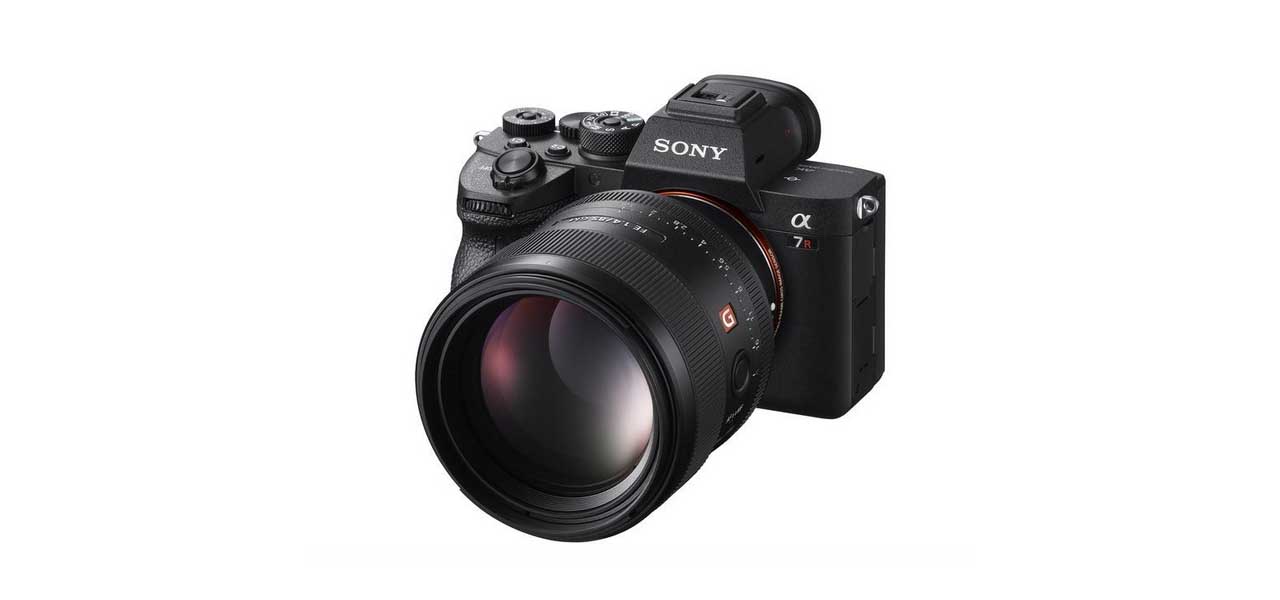
Specification
- Camera type: Full-frame mirrorless
- Announced: 16th July 2019
- Sensor: 61MP BSI full-frame sensor
- Lens mount: Sony FE
- Autofocus system: Hybrid with 567 phase detection + 425 contrast detection AF points
- Continuous Shooting: 10fps burst shooting with full AF / AE Tracking
- Video: 4K video with S-Log2/3, HDR
- Sensitivity range: Still images: ISO 100-32000 (expandable to ISO 50 to ISO 102400) Movies: ISO 100-32000
- Viewfinder: 0.5 type 5,760,000-dot OLED
- Screen: Tilting 3-inch 1,440,000-dot touchscreen
- Storage: 2x SD/SDHC/SDXC UHS-II
- Battery: Rechargeable NP-FZ100 battery supplied, Life Stills: 530 shots (viewfinder) / 670 shots (LCD), Movies: 90mins (viewfinder) / 105mins (LCD)
- Dimensions (WxHxD): 128.9 x 96.4 x 77.5mm
- Weight: 665 g / 1lb 7.5oz with battery and SD card
The Sony A7R IV is the fourth generation of the Sony A7R-series of full-frame mirrorless cameras that was first introduced in October 2013. With 61million effective pixels on its sensor, it’s the highest-resolution mirrorless Sony camera we’ve seen to date and it comes with a very sophisticated autofocus system.
Inside the Sony A7R IV is a 61.0Mp back-illuminated full-frame (35.7×23.8mm) Exmor R CMOS sensor. This has a front-end LSI and is paired with the latest incarnation of Sony’s BIONZ X image processing engine.
According to Sony, this combination enables images to be captured with up to 15-stops of dynamic range.
Astonishingly for such a high resolution camera, the A7R IV also has a maximum continuous shooting rate of 10fps (frames per second) with continuous autofocus and exposure. What’s more that rate can be maintained for up to 68 Extra Fine Jpegs or compressed RAW files.
That means you can shoot at 10fps for just under 7 seconds, which is likely to be enough for most shooting situations. However, if you need to shoot for longer, there’s an APS-C crop mode that sets the camera to record 26.2Mp files and it extends the burst depth to 200 images.
There’s also a slower full-resolution shooting rate of 8fps which enables a continuous live-view of the scene to make it easier to frame moving subjects.
In addition there’s a native sensitivity range of ISO 100-32000 for both stills and movies. If necessary, the still range can be expanded to ISO 50 to ISO 102400.
In some respects, the Sony A7R IV is the best mirrorless camera available at the moment. Its detail resolution and autofocus system are class-leading, but its price is also staggering.
£3500
$3500For
- Superb detail resolution
- Excellent autofocus system
- High-resolution electronic viewfinder
Against
- Limited use made the touch-control
- Tilting rather than vari-angle scree
- High price
Nikon Z7 II
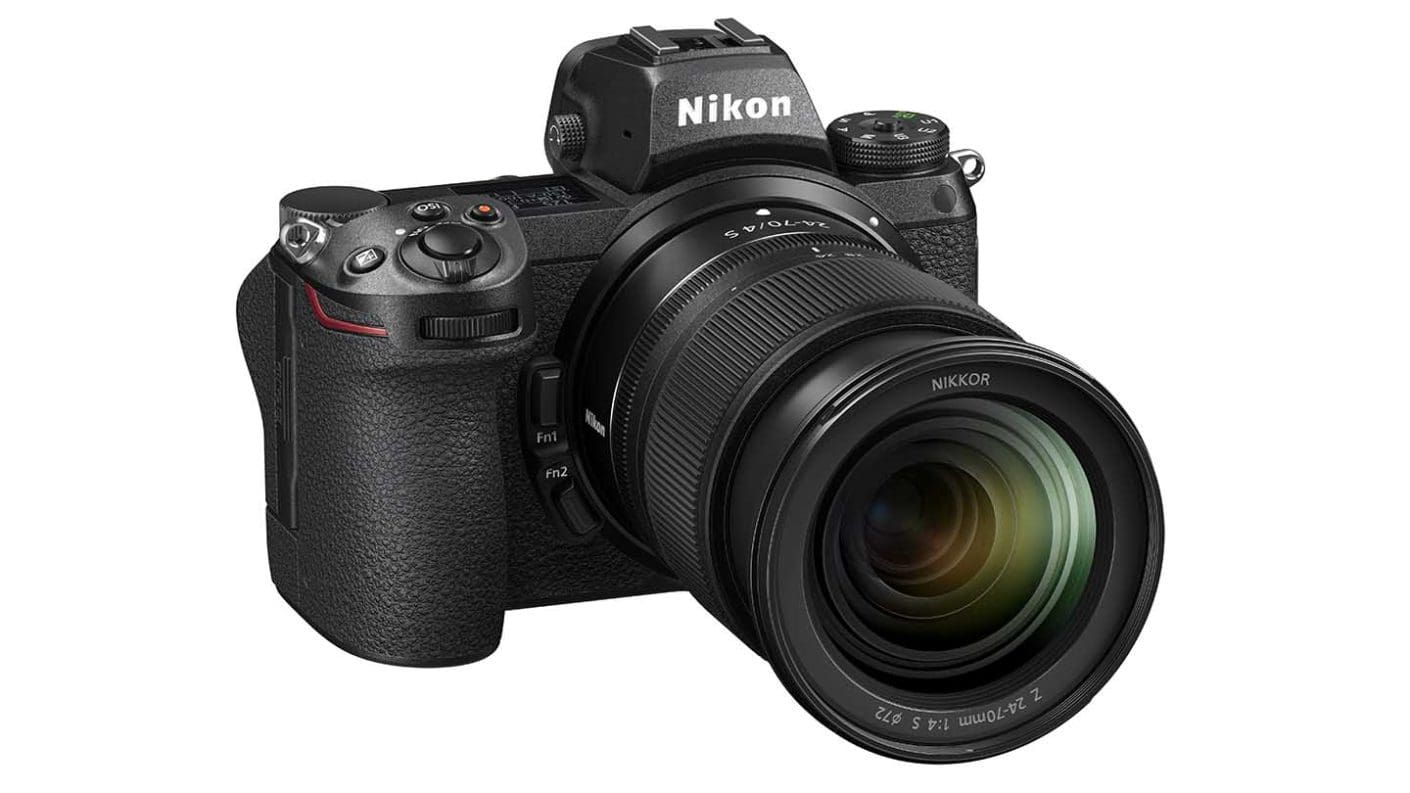
Specification
- Camera type: Full-frame mirrorless camera
- Announced: 14th October 2020
- Lens mount: Nikon Z
- Sensor: Full-frame (FX 35.9 x 23.9mm) 45.7MP backside illuminated (BSI) sensor
- Processing engine: Dual Expeed 6
- Stabilisation: 5-axis in-body VR
- Sensitivity: ISO 64-25,600, expandable to ISO 32-102,400
- Maximum continuous shooting rate: 10fps for up to 200Jpegs or 77 12-bit uncompressed raw files, 9fps with 14-bit raw files
- Autofocus system: Hybrid with phase and contrast detection
- Phase detection points: 493
- Video resolution: 4K (3840 x 2160) 60/50/30/25/24p, Full-HD (1920 x 1080) 120/100/60/50/30/25/24p, Slow-motion mode 1920 x 1080 30p x4/25p x4/24p
- Viewfinder: 0.5-inch 3.69-million-dot electronic viewfinder
- Screen: 3.2-inch 2,100,000-dot tilting touch-screen
- Storage: Dual slot 1 XQD/CFexpress and 1 SD/SDHC/SDXC
- Dimensions (W x H x D): 134 x 100.5 x 69.5mm / 5.3 x 4 x 2.8-inches
- Weight: 705g with battery and memory card but without body cap, 615g body only
Announced at the same time as the Nikon Z6 II, the Nikon Z7 II (more correctly written Nikon Z 7II) is a full-frame mirrorless camera and an update to the original Nikon Z7.
The Nikon Z7 II is an excellent camera that produces high-quality images. It also resolves one of the main concerns of the Z7 – its single memory card slot.
Expectations for an autofocus system have moved on since the Z7 was announced in August 2018 and Nikon has done a good job with firmware updates, but the Z7II’s extra processing power takes things a step further.
Consequently, the Z7 II’s AF system is more responsive, especially in low light. Its Eye-detection is also helpful, but it lags behind the performance of some fo the competition including the Canon EOS R5 and Canon EOS R6 which have astonishingly good Eye AF for humans and animals.
Given the processing power of the Z7 II, it wouldn’t surprise me if we see some firmware upgrades that improve its Eye-detection capability over the coming months.
By adding a second card slot, the Nikon Z7 II corrects the main concern that photographers have about the original Z7. Adding a second Expeed 6 processing engine also boosts the continuous shooting rate, takes 4K shooting to 60P, deepens the burst depth and enhances the low-light capability of the autofocus system.
£2999
€3442 / $2996.95For
- High-quality sensor
- Excellent user interface and control layout
- Weatherproof build
Against
- A vari-angle screen is of more use than a tilting screen for portrait orientation images
- The viewfinder resolution is no longer class-leading
- The Eye-detection AF isn't a match for Sony's or Canon's most recent systems
Nikon D850
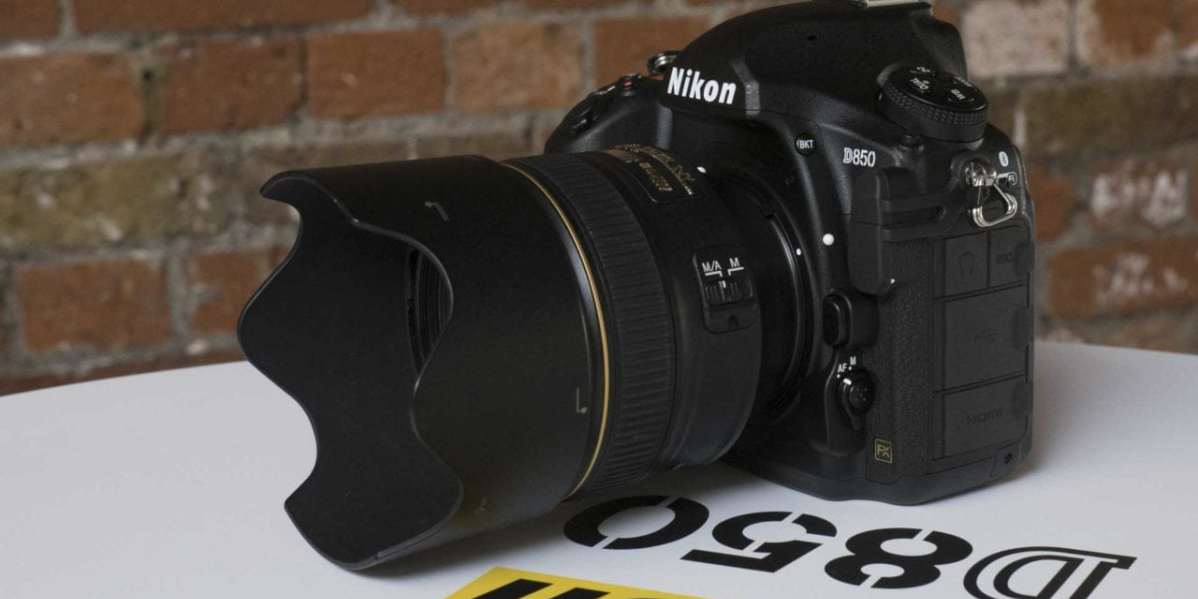
Specification
- Camera type: Full-frame (FX) DSLR
- Announced: 24th August 2017
- Lens mount: Nikon F
- Sensor: 45.7Mp full-frame (35.9 x 23.9mm) backside-illuminated CMOS
- Maximum continuous shooting rate: 7fps as standard, 9fps with the optional MB-D18 Multi-Power Battery Pack for up to 51 14-bit lossless compressed raw files or 170 12-bit lossless compressed raw files
- Autofocus system: Viewfinder: Multi-CAM 20K autofocus sensor 153 focus points (including 99 cross-type sensors and 15 sensors that support f/8), of which 55 (35 cross-type sensors and 9 f/8 sensors) are available for selection, Live view: Contrast detection
- Viewfinder: Optical pentaprism type
- Screen: Tilting, touch-sensitive 3.2-inch TFT LCD with 2,359,000 dots
- Dimensions: 146×124×78.5mm / 5.8×4.9×3.1inches
- Weight: 1,005g / 2lb 3.5oz with battery and XQD memory card but without body cap, 915g /2lb 0.3oz camera body only
The Nikon D850 is a full-frame or FX format DSLR with 45.7 million pixels on its backlit CMOS sensor. It sits below the Nikon D5 in the company’s DSLR line-up and above the D810 (which is set to continue). While the 45.7Mp sensor ensures plenty of detail is captured, the maximum shooting rate of 7fps, which can be boosted to 9fps with the optional battery-grip, plus the superb 153-point AF system should give the D850 all-round appeal for experienced photographers, professionals and dedicated enthusiasts.
Because of its combination of high pixel count and fast shooting rate along with a wide sensitivity range, Nikon is pitching the D850 as two cameras in one and it’s a reasonable argument that makes the launch price (£3,499.99/$3,296.95) a little more palatable.
Photographers normally have to choose whether they want high resolution or high frame rates and sensitivity settings, but the D850 is like a boosted D810 combined with the D500. It’s extremely capable with a very fast, accurate focusing system and a sensor and processor combination that delivers high-quality images.
If you’re looking for a high-quality DSLR that can be used in poor weather and get moving subjects sharp or deliver large images with lots detail then the Nikon D850 is an excellent choice. Its price puts it beyond the reach of many but its full-frame sensor, flagship processor, high-quality build and extensive feature set as well as the two-cameras-in-one functionality go a long way to justifying it.
£3500
$3296.95Panasonic S1R

Specification
- Camera type: Full-frame mirrorless
- Announcement: 1st February 2019
- Sensor: 47.3MP full-frame (36x24mm)
- Aspect Ratios: 2:3, 4:3, 1:1, 16:9, 2:1 and 65:24
- Sensitivity range: ISO 100-25,600, expandable to ISO 50-51,200
- Video: 4K (3840×2160) at 60fps and 150Mbps
- 6K Photo / 4K Photo: 6K PHOTO: 30 frames/sec 4K PHOTO: 60 frames/sec, 30 frames/sec, Extracted image format: Jpeg
- Maximum continuous shooting rate: Mechanical shutter: AFS/MF: H: 9 frames/sec, AFC: H: 6 frames/sec , Electronic shutter: AFS/MF: H: 9 frames/sec, AFC: H: 5 frames/sec
- Stabilisation: Dual IS 2 to 7EV compensation
- Viewfinder: 5,760,000-dot OLED
- Screen: 3.2-inch 2,100,000-dot triaxial tilt touchscreen
- Autofocus system: Contrast detection with 225 areas, Auto Detection (Face, Eye, Body, Animal)
- Storage: Dual ports: XQD/CFexpress and SD/SDHX/SDXC UHS-II
- Dimensions (HxWxD): 110x148.9x96.7mm
- Weight: 1016g
The Panasonic S1R has a sensor with an effective pixel count of 47.3million. Unlike Panasonic’s G-Series Micro Four Thirds cameras which have a native aspect ratio of 4:3, the S1R’s 36x24mm sensor is a 3:2 device. However, there are also aspect ratio settings of 4:3, 1:1, 16:9, 2:1 and 65:24 should you want them.
Given the high pixel count of the Panasonic S1R in comparison with the S1, it’s no surprise to find it has a more limited sensitivity range. The standard range is ISO 100-25,600, and there are expansion settings to take it to ISO 50-51,200. That upper value is the same as the Lumix S1’s highest native setting.
Panasonic has packed the features into the Lumix S1R. Like the 24Mp S1, it takes a little getting used to, but its control arrangement and handling are good. If you’re looking for the size advantage offered by a mirrorless design, however, the Panasonic Lumix S1R is not going to fit the bill. It’s big and hefty.
Nevertheless, except for some rather plasticky controls, it also has a nice solid build, that befits a high-end camera retailing for over £3000/$3000.
Also, it sets a new benchmark for electronic viewfinders, with a super-smooth, high-detail view. And while the screen may not flip out for viewing from the front, its robust hinges allow it to tilt horizontally and vertically. This makes it useful for all sorts of photography as well as shooting video.
Naturally, the main reason for investing in a 47Mp camera is to produce images with lots of detail. The Panasonic Lumix S1R certainly delivers on this score. If you want to take things up a notch, there’s the High Resolution mode.
£2899
$3698For
- Robust build
- High-quality high-resolution images
- Excellent handling with lots of customisation
Against
- Big for a mirrorless camera
- AF system not as dependable as some
- Currently limited lens range
